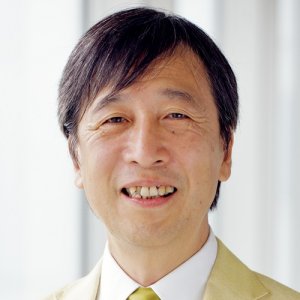
Even though his academic research has nothing to do with nuclear power and its radioactive byproducts, he decided to devote his time to studying the effects of the disaster. In December of 2011, for example, he and some colleagues published a paper1 that contained detailed maps of the Cesium-137 contamination in the soil. This isotope is the most abundant contaminant in the environment around Fukushima. The authors specifically stated that their data should be used to guide the efforts of government officials who were trying to protect Japan’s food supply.
As time went on, government officials began offering assurances that the food supply was safe, but they were not providing any hard facts to support their claim. As a result, Hayano decided to do his own research. He began analyzing school lunches that were being served in Minamisoma, which is only 25 kilometers from the Fukushima Daiichi plant. Once a week, he would take everything on a lunch tray from an elementary school and a nursery school, throw it into a blender, and measure the radiation level. Every week, the levels were well below the safety limit. For example, the level of Cesium-137 allowed in the U.S. food supply is 370 Becquerels per kilogram. Hayano rarely found a reading greater than 1 Becquerel per kilogram in the food that he analyzed.2
This, of course, indicated that Japan was doing a good job of making sure the food supply was not contaminated with radiation from the power plant disaster. Now if you’re worried that Dr. Hayano is just a paid hack working for the government, you need to know that when he started this program, he was funding the project himself. He spent about $3,000 of his own money before he got support from the government as well as his Twitter followers. Hayano wasn’t satisfied with this study, however, so he got together with some other physcists and decided to do something more ambitious.
He and his colleagues examined a total of 32,811 residents of the Fukushima area using a full-body radiation scanner. Once again, they specifically looked for Cesium-137, the most abundant radioactive isotope in the Fukushima area that came from the power plant disaster. They found that the vast majority of subjects did not have a detectable level of Cesium-137 in their bodies. This included all children in the study. In fact, there were only four subjects (all adults) who had Cesium-137 levels that could pose a health risk, and the authors found that all of them were eating mushrooms or boar meat that they got from the wild, not from a store.3
They say that the results are surprising, because studies of the Chernobyl nuclear power plant accident (which was worse) led them to believe that the people in the vicinity of the reactor would have a detectable level of contamination. Once again, then, it seems that Japan is doing a good job of making sure that the radiation risks to which its people are exposed are minimal.
Several studies have already estimated that the long-term effects of the Fukushima Daiichi disaster will be minimal. This study adds weight to those predictions. If the people living in the same area as the power plant don’t have detectable levels of the most abundant radioactive contaminant in their bodies, it’s hard to imagine how there can be serious, long-term effects related to the disaster. Nevertheless, all but two of Japan’s 50 nuclear power plants remain idle due to fears of another disaster.
I hope data like these help people understand that the risks related to nuclear power are minimal, even when a disaster occurs.
REFERENCES
1. Teppei J. Yasunaria, Andreas Stohl, Ryugo S. Hayano, John F. Burkhart, Sabine Eckhard, and Tetsuzo Yasunarie, “Cesium-137 deposition and contamination of Japanese soils due to the Fukushima nuclear accident,” Proceedings of the National Academy of Sciences of the United States of America, 108:19530–19534, 2011
Return to Text
2. Dennis Noramile, “Insistence on Gathering Real Data Confirms Low Radiation Exposures,” Science 340:678-679, 2013
Return to Text
3. Ryugo S. Hayano, Masaharu Tsubokura, Makoto Miyazaki, Hideo Satou, Katsumi Sato, Shin Masaki, and Yu Sakum, “Internal radiocesium contamination of adults and children in Fukushima 7 to 20 months after the Fukushima NPP accident as measured by extensive whole-body-counter surveys,” Proceedings of the Japan Academy, Series B 89(4):157-163, 2013
Return to Text

Fascinating! I hadn’t realized scientists are making leaps and bounds in dealing with and minimizing radiation poisoning, especially in the food supply
Evan, it’s not so much that they are doing anything to clean up contaminated food. They are just making sure that the contaminated food doesn’t enter the commercial food supply.
I’m kind of wondering about the ocean water. How severe have the creatures been affected? My Mom is concerned about buying seafood now, and thinks that the ocean has been severely contaminated with radiation.
Thanks for your question, Kendall. The ocean near Japan has been contaminated with radiation, and many of the fish there do have dangerous levels of radiation in them. However, so far, the government safety inspectors are doing a good job of removing such fish from the food supply, because the people are not accumulating radiation. If you live outside of Japan, there is no danger. Trace amounts of radiation from the Fukushima disaster have shown up in fish far from Japan, but the quantity is far too small to pose health risks. However, as the linked article tells you, it is allowing scientists to learn more about how some fish travel.